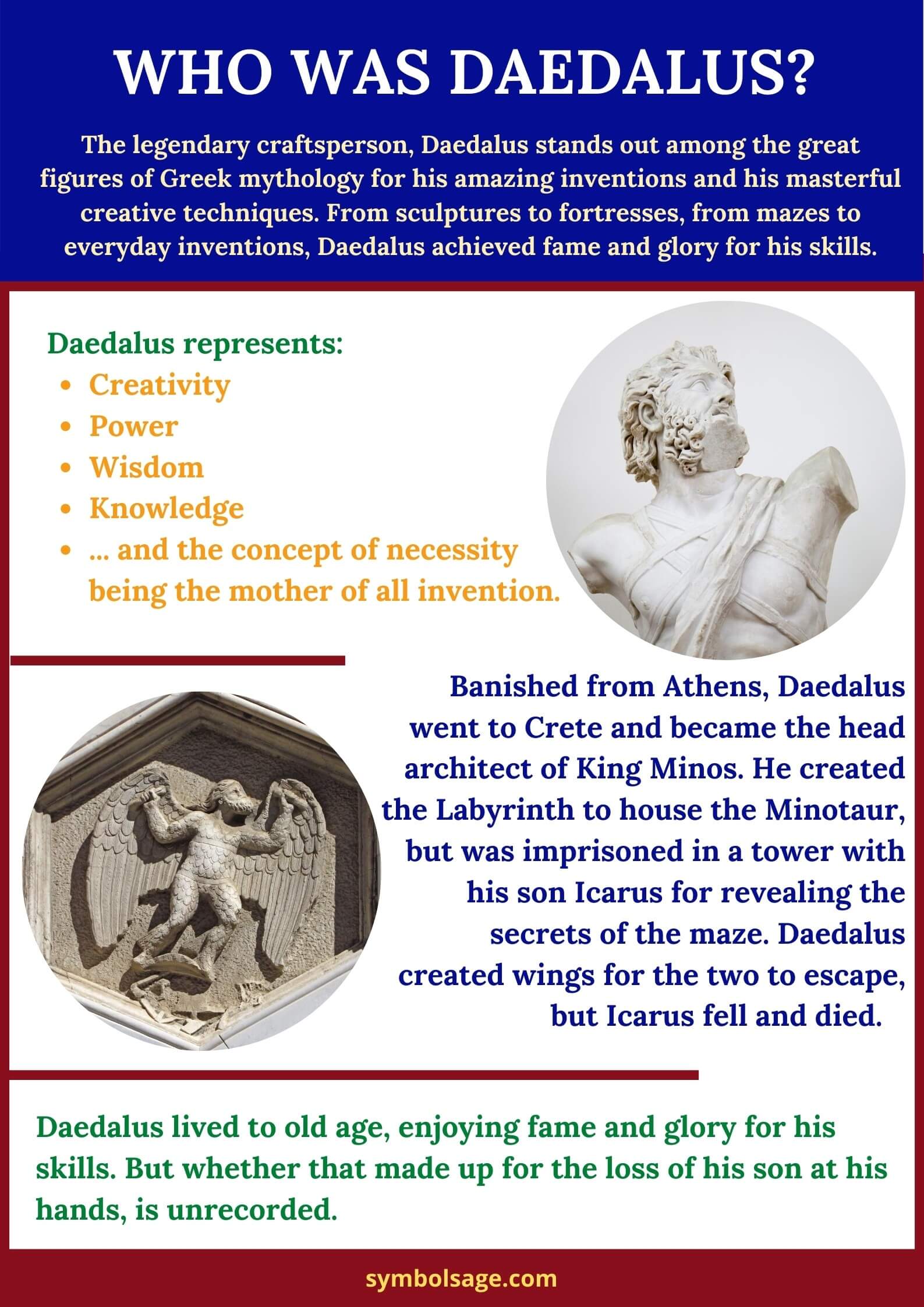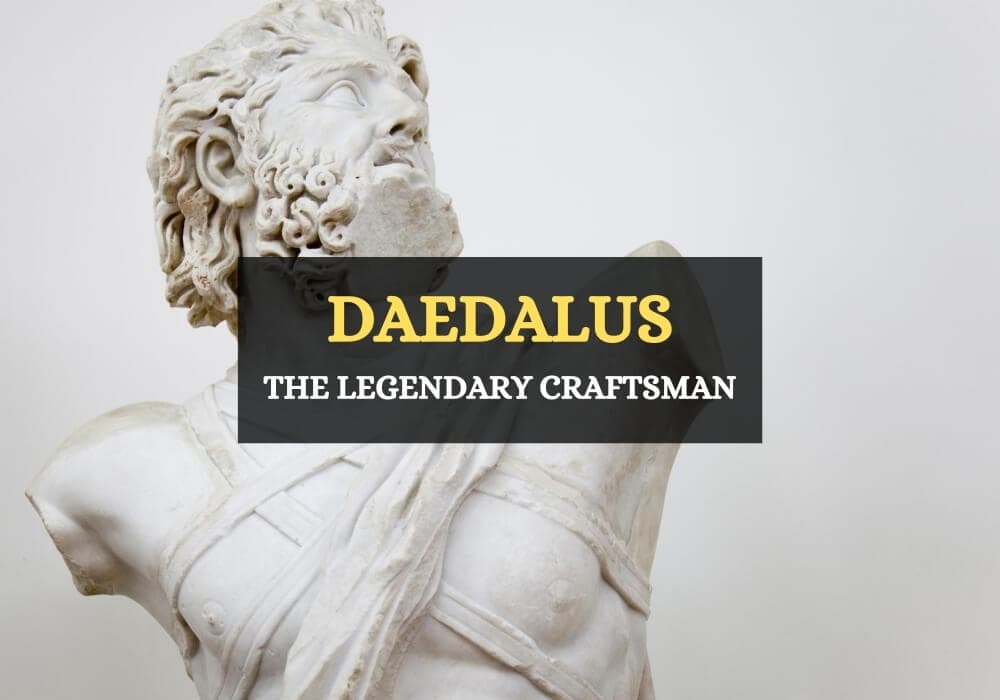
Table of Contents
The legendary craftsperson, Daedalus, normally associated with Hephaistos, the god of fire, metallurgy, and crafts, stands out among the great figures of Greek mythology for his amazing inventions and his masterful creative techniques, including the famous Labyrinth of Crete.
Here’s a closer look at Daedalus, what he symbolizes and why he continues to be popular today.
Who Was Daedalus?
Daedalus was an architect, sculptor, and inventor of Ancient Greece, who served the kings of Athens, Crete, and Sicily. His myths appear in the writings of authors like Homer and Virgil, due to its important connection with other myths such as the Minotaur.
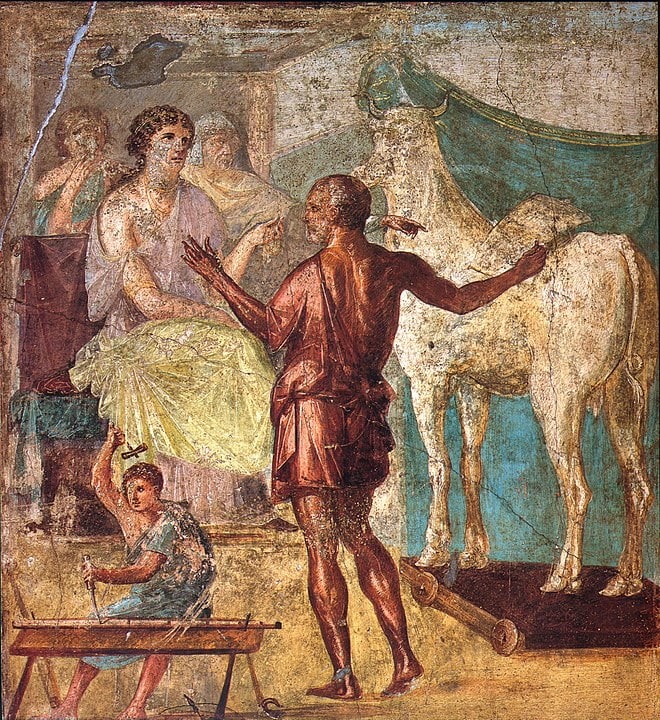
Daedalus was a famous artist in Athens before being exiled for a crime against his own family. It’s said that the statues and sculptures created by Daedalus were so realistic that the people of Athens used to chain them to the floor to keep them from walking away.
Daedalus’ parentage remains unclear, but according to some sources, he was born in Athens. He had two sons, Icarus and Lapyx, and a nephew, Talos (also known as Perdyx), who was a craftsperson such as he was.
The Story of Daedalus
Daedalus is known in Greek Mythology for having taken part in different events in Athens, Crete, and Sicily.
Daedalus in Athens
Daedalus’ myth begins with his exile from Athens after having killed his nephew, Talos. According to the stories, Daedalus was jealous of the increasing talent and skills of his nephew, who had started working with him as an apprentice of the craft.
Talos is said to have invented the first compass and the first saw. In a rush of envy, Daedalus threw his nephew off the Acropolis, an action for which he was banished from the city. He then went to Crete, where he was well-known for his craftsmanship. He was welcomed by King Minos and his wife Pasiphae.
Daedalus in Crete
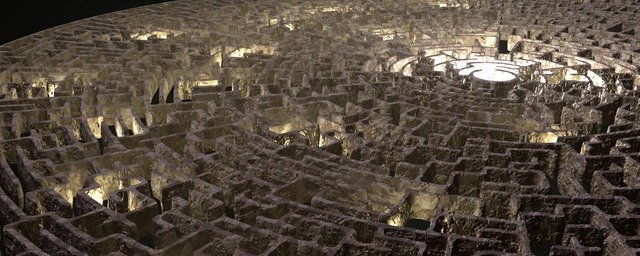
The most important events in Daedalus’ stories, which were the Labyrinth of Crete and the death of his son Icarus, occurred in Crete.
The Labyrinth of Crete
King Minos of Crete prayed to Poseidon to send a white bull as a sign of blessing, and the god of sea obliged. The bull was supposed to be sacrificed to Poseidon, but Minos, enchanted by its beauty, decided to keep the bull. Furious, Poseidon caused Minos’ wife, Pasiphae, to fall in love with the bull and mate with it. Daedalus helped Pasiphae by designing the wooden cow she would use to attract the bull she was in love with. The offspring of that encounter was the Minotaur of Crete, a half-man/half-bull ferocious creature.
King Minos demanded Daedalus to create the Labyrinth to imprison the creature because it could not be contained and its desire to eat human flesh was uncontrollable. Since Minos was reluctant to feed his people to the beast, he had young men and maidens brought from Athens every year as a tribute. These young people were released into the Labyrinth to be eaten by the Minotaur. The Labyrinth was so complex, that even Daedalus could barely navigate it.
Theseus, a prince of Athens, was one of the tributes to the Minotaur, but Ariadne, the daughter of Minos and Pasiphae, fell in love with him and wanted to save him. She asked Daedalus how Theseus could get into the Labyrinth, find and kill the Minotaur and find his way out again. With the advice given by Daedalus, Theseus was able to successfully navigate the Labyrinth and kill the Minotaur.
Some sources say that the weapon later used by Theseus to kill the Minotaur was also given by Daedalus. Naturally, Minos was enraged and had Daedalus imprisoned with his son, Icarus, in a high tower, so that he could never reveal the secret of his creation again.
Daedalus and Icarus Flee Crete
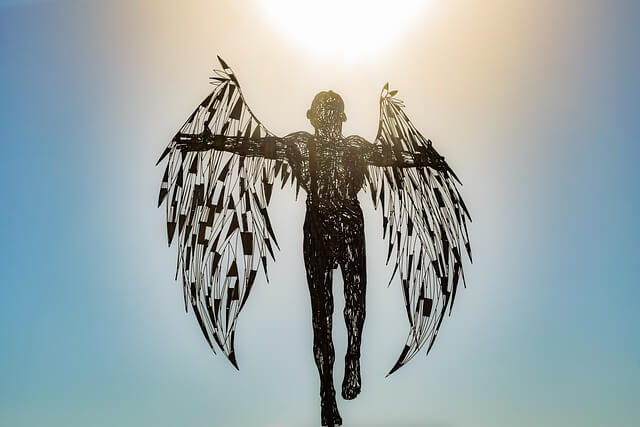
Daedalus and his son managed to escape the tower in which they had been imprisoned, but since the ships to leave Crete were controlled by Minos, he had to find a different escape route. Daedalus used feathers and wax to create wings so that they could fly to freedom.
Daedalus advised his son not to fly too high because the wax, which was keeping the whole contraption together, could melt with the heat of the sun, and not too low because the wings could get damped with seawater. They jumped off the high tower and started flying, but his son, full of excitement, flew too high, and when the wax melted, he fell to the ocean and drowned. The island close to where he plummeted was called Icaria.
Daedalus in Sicily
After having fled Crete, Daedalus went to Sicily and offered his services to king Cocalus, who soon rejoiced at the arrival of the artist for his amazing creations. He designed temples, baths, and even a fortress for the King, as well as a famous temple for Apollo. However, King Minos decided to pursue Daedalus and bring him back to Crete to be imprisoned.
When Minos arrived at Sicily and demanded Daedalus to be given to him, King Cocalus advised him to first relax and take a bath and take care of those affairs later. While having the bath, one of Cocalus’ daughters killed Minos, and Daedalus was able to stay on in Sicily.
Daedalus as a Symbol
Daedalus’ brilliance and creativity have given him a space among the important figures of Greece, to the extent that even family lines have been drawn and philosophers such as Socrates are said to be his descendants.
Daedalus’ story with Icarus has also been a symbol throughout the years, representing the intelligence and creativity of man and the misuse of those traits. Even today, Daedalus represents wisdom, knowledge, power and creativity. His creation of the wings, using the bares of materials, symbolizes the concept of necessity being the mother of invention.
Apart from this, the Romans designated Daedalus as the protector of the carpenters.
Daedalus’ Influence in the World
Besides all the influence the myths carry, Daedalus has also influenced art. The Daedalic sculpture was a particularly important artistic movement, of which the main exponents can still be seen in current times. Daedalus is said to have invented the sculptures that represent movement, in opposition to the classic Egyptian sculptures.
The myth of Daedalus and Icarus can be seen depicted in art, such as in paintings and on pottery, dating back to 530 BCE. This myth has also had great importance in education, since it has been used as a teaching resource for children, to teach wisdom, following the rules and respect to the family. Several tales and animated series have been created to make the myth easier to understand for children.
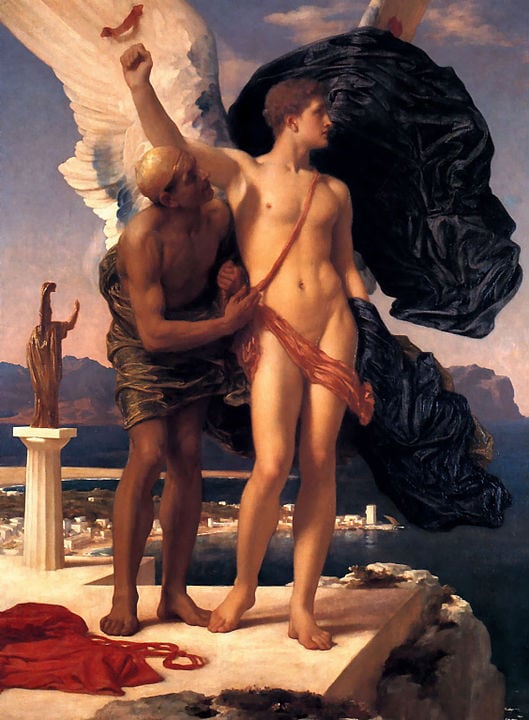
In Brief
Daedalus is an influential figure in Greek mythology, whose brightness, inventiveness, and creativity made him a remarkable myth. From sculptures to fortresses, from mazes to everyday inventions, Daedalus stepped strongly into history. Many have heard of Daedalus and Icarus’ story, which is perhaps the most famous part of Daedalus history, but his entire story is just as interesting.
